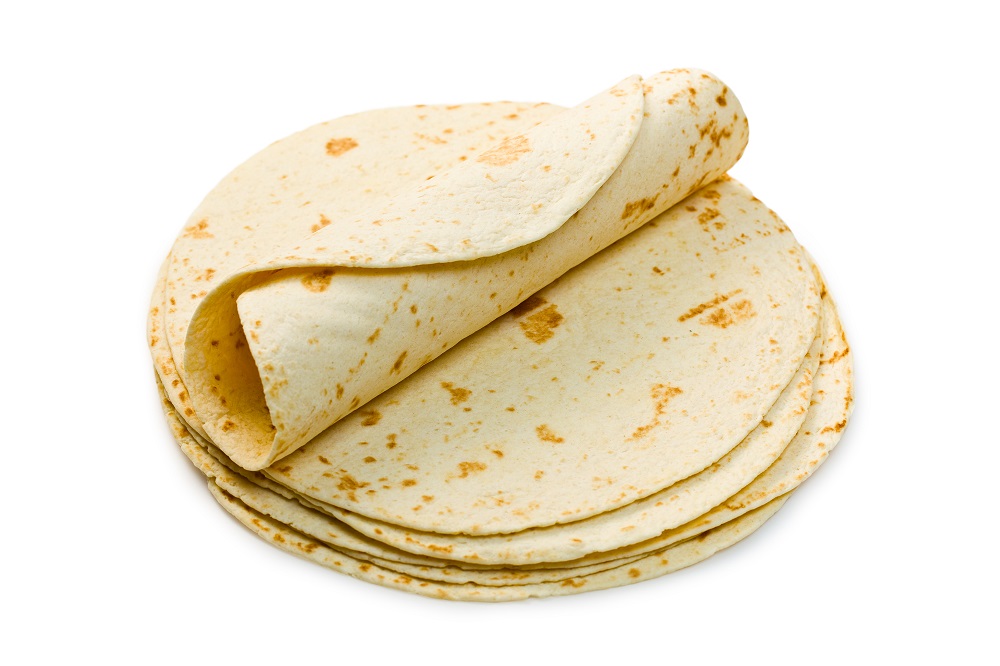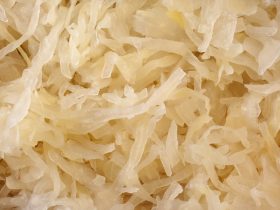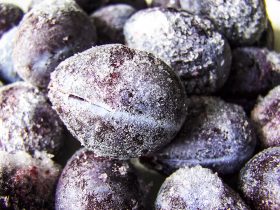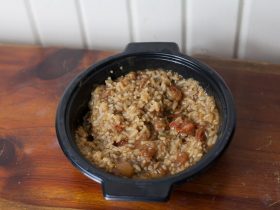Tortilla is a form of bread generally shaped into a circular and flat form. Primarily consisting of either ground wheat flour or corn meal, tortillas are popular throughout much of the Americas and other Hispanic countries.
Tortillas primarily have a neutral or slightly savory flavor and are meant as more of a wrapping than as the main focus of a dish, essentially acting as an edible packaging for whatever ingredients are contained within.
Being a bread dish, tortillas are primarily susceptible to spoilage from the colonization of mold or other types of fungus. This is particularly pronounced in storage environments that are high in humidity, and as such it is best to store tortillas in such a way that they are insulated from moisture, such as in the freezer.
Tortillas may be frozen for quite a length of time with no noticeable change in their textural or taste quality. However, it is the defrosting of said tortillas that often presents a problem, and as such freezing tortillas should only be used in the event that you require long term storage.
Can You Freeze All Kinds of Tortillas?
While tortillas were originally created using maize hominy meal, many modern tortilla manufacturers have elected to instead use more commonly available ingredients, such as wheat flour. This, apart from the change in flavor, also presents a slightly different reaction to being placed in freezing temperatures.

However, this difference is negligible in the grand scheme of things, and therefore does not necessitate any deviation in storage procedure. So, yes – the vast majority of tortillas may be frozen, no matter the type of grain or vegetable they are made from.
Can You Freeze Raw Tortillas?
Tortillas are often purchased in stacks from grocery stores or bakeries. However, due to the fact that they require only one or two ingredients, it is not uncommon for many home chefs to make tortillas themselves instead.
While raw tortilla generally has a shorter shelf-life than that of tortilla that has already been cooked, it is still perfectly capable of being preserved in the freezer in the event that you do not yet wish to cook them.
In order to freeze raw tortillas, all that is required is to evenly coat their surfaces with flour so as to prevent them from sticking to each other and to then stack them atop one another in a freezer-safe resealable container.
Keep in mind, however, that raw tortillas stored in this way will take approximately one hour to thaw before they may be cooked, and as such offer only a marginal level of convenience in comparison to simply making the tortilla when they are needed.
Do Store Bought Tortillas Last Longer than Homemade Tortillas?
Home chefs often swear by the idea that tortillas made by hand and within their own home or restaurant are of higher quality than that of the commercially manufactured and purchased kind.
While this is a valid argument and may be entirely true, there is no denying the fact that homemade tortillas tend to have a significantly shorter shelf-life than their commercially made counterparts.
Bakeries and tortilla manufacturers often go to great lengths to maximize their profits by preventing wastage of their products. This is usually done by incorporating various different types of preservative compounds into the dough of the tortilla as it is being made, boosting its shelf-stability and allowing it to survive the rigors of transport and storage in a market or grocery store.
Apart from the addition of preservatives, store-bought tortillas are often made in a relatively sterile environment and are subsequently packaged in storage containers that help resist the colonization of microbial life, also causing the tortillas to last for a longer period of time.
Generally, homemade tortillas will only last for approximately three days if stored in the pantry or on the kitchen counter, a significantly shorter length of time that that of the commercially manufactured tortilla brands.
How to Freeze Tortillas
In order to begin freezing your tortillas, first allow them to cool off completely if they have only recently been removed from the stove or oven. This step is vital as excess heat will cause moisture to evaporate, forming steam which will subsequently crystallize into ice once placed in the cold temperatures of the freezer.
Lightly dust the surfaces of the tortillas in flour if they have not been already. Dusting with flour will prevent the tortillas from fusing together in the event that any moisture may still be present between each individual piece of flatbread.
Once dusted with flour and allowed to cool down, simply pile the tortillas into individual freezer bags or resealable plastic pouches. We suggest separating the tortillas into multiple batches of bags so as to prevent the formation of moisture as the entirety of the tortillas are removed from the freezer.
Push out as much air as possible from within the bags of tortillas, essentially vacuum sealing the bread products within. Seal the bags as tightly as you can manage.
Place the bags of tortillas stacked atop one another in the deepest part of the freezer, far from any sources of moving air as these will cause freezer burn, affecting the texture and appearance of the tortillas.
Stored in this manner, tortillas can last for up to eight months, though minor degradation in their quality may occur before this point in time.
How to Thaw Tortillas
As previously mentioned in the beginning of this article, it is not in fact the process of freezing that will compromise the quality of tortillas during long term storage but the act of thawing it after.
Owing to the dynamics of gas and fluid, the rapidly changing temperatures of the tortilla when placed in a sufficiently warm environment will cause condensation of water to develop along its surface, creating a soggy and unpleasant product.
As such, it is best to instead thaw tortillas slowly in a storage area with similar temperatures to that of the freezer, such as placing it overnight in the driest section of the refrigerator. This, if performed correctly, will help prevent most of the texture and flavor degradation that occurs during the thawing process of tortillas.
This is facilitated by the method of separating the tortillas that you may have followed from the previous section wherein the tortillas are separated into individual serving size batches, allowing you to simply move one or two bags of tortillas to the refrigerator without exposing the entirety of the tortillas.
However, if you are pressed for time and a minor loss in quality is of no concern such as in the case of creating corn tortilla chips, you may instead place the frozen tortillas in a microwave safe dish and blitz them with the microwave set to its defrost mode for up to five seconds at a time.
Keep in mind that microwaving tortillas will cause a layer of steam to form beneath them and cause a gooey or soggy layer to form along whatever side is in contact with the dish.
References
1. Wood, Stephanie (ed.). “tlaxcalli”. Online Nahuatl Dictionary. Wired Humanities Projects at the University of Oregon.
2. Mora-Escobedo R, Osorio-Diaz P, Garcia-Rosas MI, Bello-Perez A, Hernandez-Unzon H. Changes in Selected Nutrients and Microstructure of White Starch Quality Maize and Common Maize During Tortilla Preparation and Storage. Food Science and Technology International.





Hi, I'm Dom
Dom Eats was started to help other people fall in love with food. While cooking can feel intimidating, it doesn't have to be.